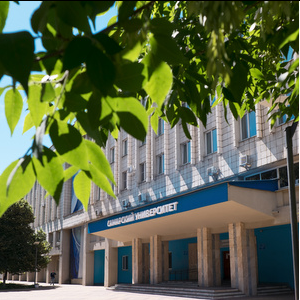The RAEX Rating Agency (RAEX-Analytics) has presented the latest ranking by subjects of Russian universities. In 2023, the number of covered areas increased by 20%, and amounted to 35 areas, including mathematics, a wide range of natural science and engineering specialties, social and humanitarian areas, as well as pedagogy, medicine and agriculture. The rankings answer the question: which universities provide its students with the best educational and scientific training in particular subject areas, considering the University’s contribution to social development.
In total, 164 universities from 42 regions of Russia were included in the best universities lists (in 2022, 136 educational organizations from 41 constituent entities of the Russian Federation were included in 29 rankings). As in 2022, Lomonosov Moscow State University, Saint Petersburg State University, and the National Research University “Higher School of Economics” have become the leaders. These universities managed to enter the top 3 subject rankings in more than 10 areas.
Samara University entered the top 20 best universities in 9 areas at once. Moreover, in the area “Aviation and Space-Rocket Engineering,” the University took the 4th place, and in the area “History and Archeology,” it rose to the 13th place.
Samara University has entered the ranking by 9 subject:
• “Aviation and Space-Rocket Engineering” — the 4th place;
• “History and Archeology” — the 13th place;
• “Chemistry” — the 15th place;
• “Sociology” — the 18th place;
• “Biology” — the 19th place;
• “Mechanical Engineering and Robotics” — the 19th place;
• “Materials Technologies” — the 19th place;
• “Physics” — the 20th place;
• “Political Science and International Relations” — the 20th place.
For reference:
The RAEX Agency Survey has identified three groups of indicators that are traditional for all rankings of the “Three Missions of the University” family: education, science and society. Moreover, rankings by subject consider specific features of each area: the set of indicators and their weights vary depending on the subject area. For example, for the natural science and engineering areas, the weight of the “science” group is 35%, while for the social and humanitarian spheres — 25%.
When assessing the first — educational — mission of the universities, the quality of training of enrolled applicants, the staffing of the university, competitiveness of the Master’s Degree Programs, the amount of funding, results of the students’ participation in Russian Student Olympiads, the number of mass online courses are evaluated.
The Science group indicators include bibliometric ones (publications and their citation), according to the Web of Science, Scopus and RSCI databases, income from research adjusted for scale, the scale of training specialists of the highest qualification (postgraduate school), the number of dissertations defended, as well as the share of extra-budgetary sources in the total amount of expenses for research and developments.
When assessing the third — social mission of the universities, both subject and institutional indicators related to the university as a whole were considered. So, at the subject level, indicators measuring the university’s contribution to training specialists for its region, the share of students in the area nationwide, the share of enrolled target students, the share of first-year students from other regions were compared. The criteria of the institutional level, also considered in the Society group, are the amount of income from additional education programs and the number of those who have completed training on them, diversity of knowledge at the University level (the number of available programs), the audience of the University’s website and the number of subscribers in social networks, as well as frequency of mentions of the University in the mass media.
